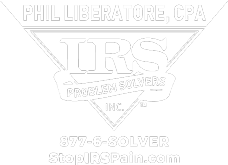
June Estimated Tax Payments Are Around The Corner
June 15th falls on the weekend this year, so the due date for the second installment of estimated taxes is the next business day, June 17, which is just around the corner. So, it is time to determine if your estimated tax payment should be lowered if you overestimated your income for 2019 or increased if you underestimated it.
Unlike employees, a self-employed individual must estimate his or her net earnings for the year and pay taxes on a quarterly basis according to that estimate. Failure to do so will result in interest penalties.
The self-employed are not the only ones who are subject to estimated tax requirements, which also apply to anyone who has income that is not subject to withholding taxes and even to those whose taxes are not sufficiently withheld. Thus, if you have income from stock sales, property sales, investments, alimony, partnerships, S-corporations, inherited pension plans, or other sources that are not subject to withholding, you may also be required to pay either estimated taxes or an underpayment penalty. Others subject to making estimated payments are individuals who must pay special taxes such as the 3.8% tax on net investment income or the employment tax on household employees.
Although these payments are called “quarterly” estimates, the periods they cover do not usually coincide with a calendar quarter.
|
Quarter
|
Period Covered
|
Months
|
Due Date*
|
| First | January through March | 3 | April 15 |
| Second | April and May | 2 | June 15 |
| Third | June through August | 3 | September 15 |
| Fourth | September through December | 4 | January 15 |
An underestimate penalty won’t apply if the tax due on a return (after withholding and refundable credits) is less than $1,000; this is the “de minimis amount due” exception. When the tax due is $1,000 or more, underpayment penalties are assessed.
These underpayment penalties are determined on a quarterly basis, so an underpayment in an earlier quarter cannot be made up for in a later quarter; however, an over payment in an earlier quarter is applied to the following quarter.
The amount of an estimated payment is determined by estimating one fourth of the taxpayer’s tax for the entire year; the projected tax is paid in four installments. When the income is seasonal, sporadic, or the result of a windfall, the IRS provides a special form, and the underpayment penalty is based on actual income for the period.
For individuals who do not want to take the time to estimate their quarterly taxes but who still want to avoid the underpayment penalty, Uncle Sam also provides safe-harbor estimates.
However, even these can be tricky. Generally, a taxpayer can avoid an underpayment penalty if his or her withholding and estimated payments are equal to or greater than:
- 90% of the current year’s tax liability or
- 100% of the prior year’s tax liability.
However, these safe harbors do not apply if the prior year’s adjusted gross income is over $150,000, in which case, the safe harbors are:
- 90% of the current year’s tax liability or
- 110% of the prior year’s tax liability.
Sometimes, individuals who have withholding on some (but not all) of their sources of income will increase that withholding to compensate for the additional income that comes from sources that have no withholding. Although this may work, withholding adjustments are not as precise as quarterly payments and should be used with caution. Similarly, when the safe harbor method based on the prior year’s tax liability is used, and the taxpayer has some withholding and also makes estimated tax payments, it’s important to monitor the current year’s withholding to be sure that the combined withholding and estimated installment prepayments will meet the safe harbor target amount.
We can assist you in estimating payments, adjusting withholding, and setting up safe-harbor payments. Please call for assistance at 562-404-7996 for more information.










